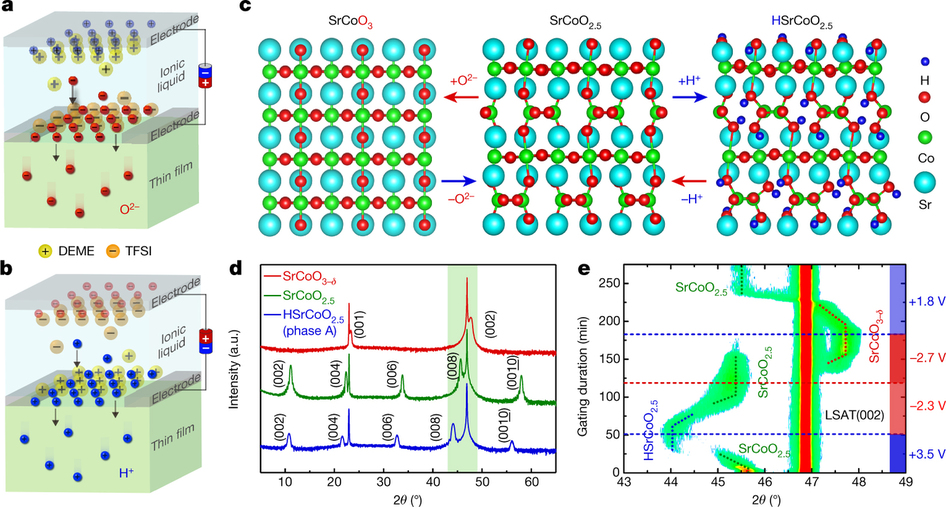About
News and Events
Beamlines
- User Facilities
- Beamlines Directory
- BL08U1-A
- BL08U1-B
- BL09U
- BL13W1
- BL14W1
- BL14B1
- BL15U1
- BL16B1
- BL17U1
- BL01B1
- BL17B1
- BL18U1
- BL19U1
- BL19U2
Technology
- Accelerator Physics
- Accelerator Operations
- Radio Frequency
- Beam Instrumentation
- Control Systems
- Electronics & Detector
- Mechanical Engineering
- Vacuum
- Magnets
- Magnet Power Supplies
- Pulse Technique
- Cryogenics
- Front Ends
- Optics
User Information
Science and Publications
Electric-field Control of Tri-state Phase Transformation with a Selective Dual-ion Switch
Materials can be transformed from one crystalline phase to another by using an electric field to control ion transfer, in a process that can be harnessed in applications such as batteries, smart windows and fuel cells. Increasing the number of transferrable ion species and of accessible crystalline phases could in principle greatly enrich material functionality. However, studies have so far focused mainly on the evolution and control of single ionic species (for example, oxygen, hydrogen or lithium ions). Here we describe the reversible and non-volatile electric-field control of dual-ion (oxygen and hydrogen) phase transformations, with associated electrochromic and magnetoelectric effects. We show that controlling the insertion and extraction of oxygen and hydrogen ions independently of each other can direct reversible phase transformations among three different material phases: the perovskite SrCoO3−δ, the brownmillerite SrCoO2.5, and a hitherto-unexplored phase, HSrCoO2.5. By analysing the distinct optical absorption properties of these phases, we demonstrate selective manipulation of spectral transparency in the visible-light and infrared regions, revealing a dual-band electrochromic effect that could see application in smart windows. Moreover, the starkly different magnetic and electric properties of the three phases—HSrCoO2.5 is a weakly ferromagnetic insulator, SrCoO3−δ is a ferromagnetic metal1, and SrCoO2.5 is an antiferromagnetic insulator—enable an unusual form of magnetoelectric coupling, allowing electric-field control of three different magnetic ground states. These findings open up opportunities for the electric-field control of multistate phase transformations with rich functionalities. SXAS measurements of cobalt L-edges and oxygen K-edges in total electron yield (TEY) mode were carried out at: beamline 8.0.1 of Advanced Light Source; beamline 4B9B of Beijing Synchrotron Radiation Facility; beamline 08U1A of Shanghai Synchrotron Radiation Facility; and beamline 14 of Hiroshima Synchrotron Radiation Center.

Links: doi:10.1038/nature22389


 Copyright©2006.12 Shanghai Advanced Research Institute.
Copyright©2006.12 Shanghai Advanced Research Institute.